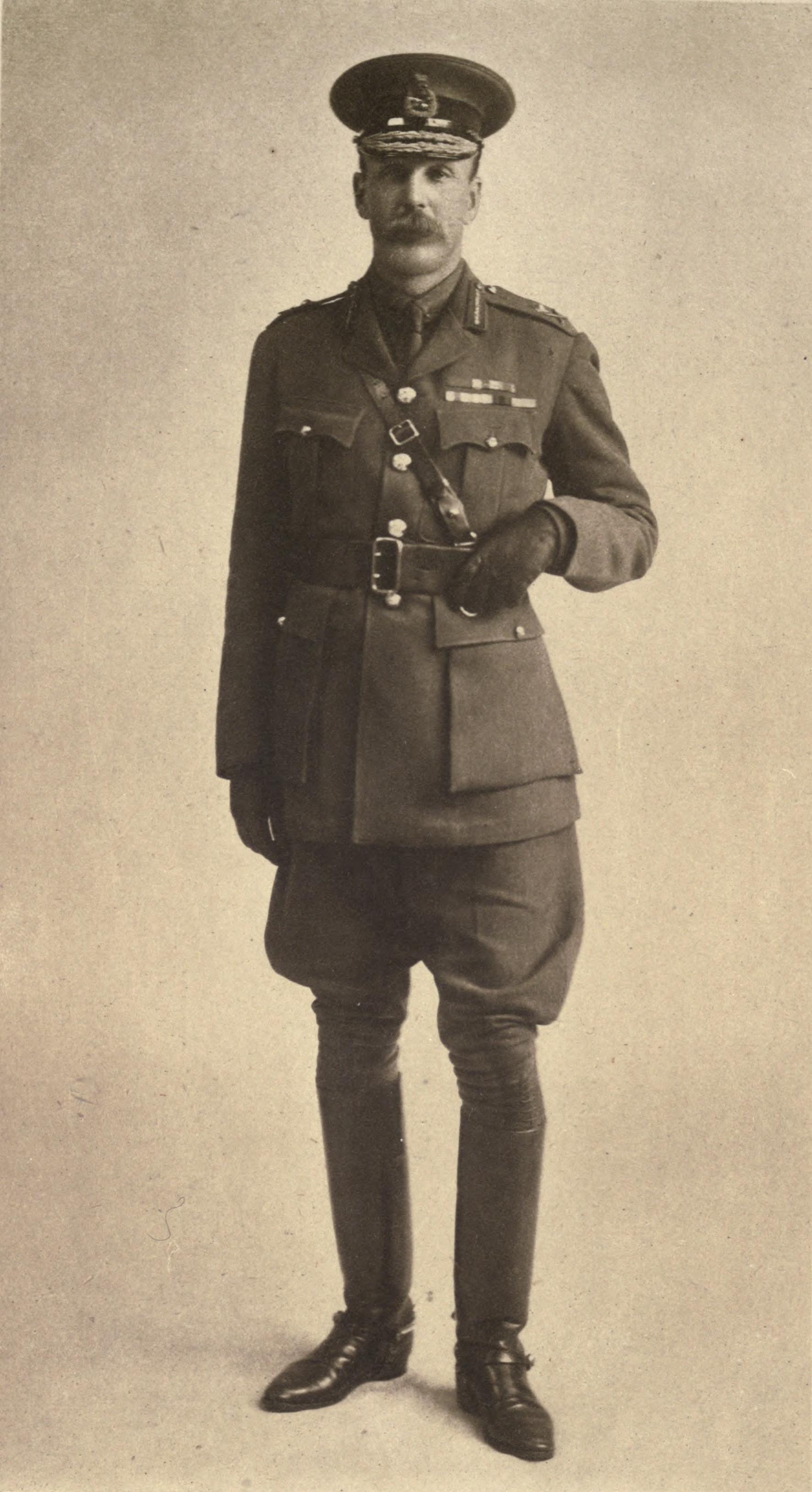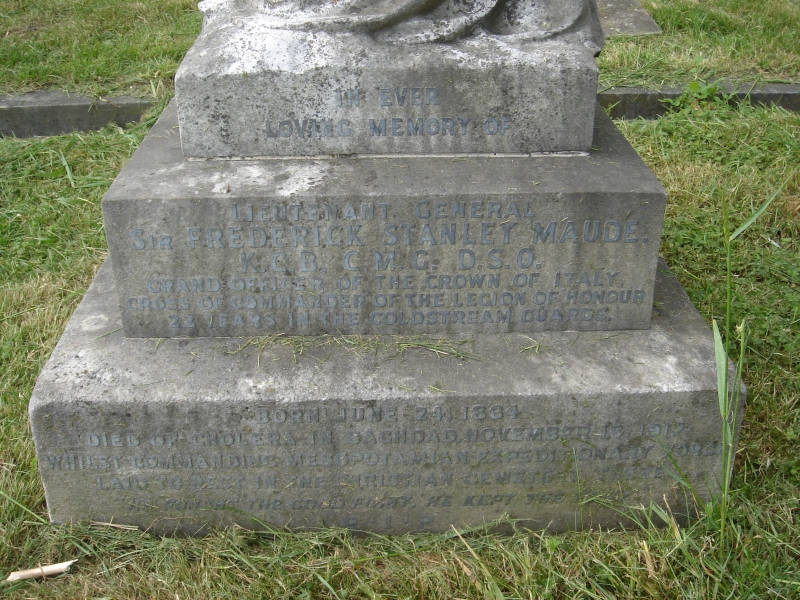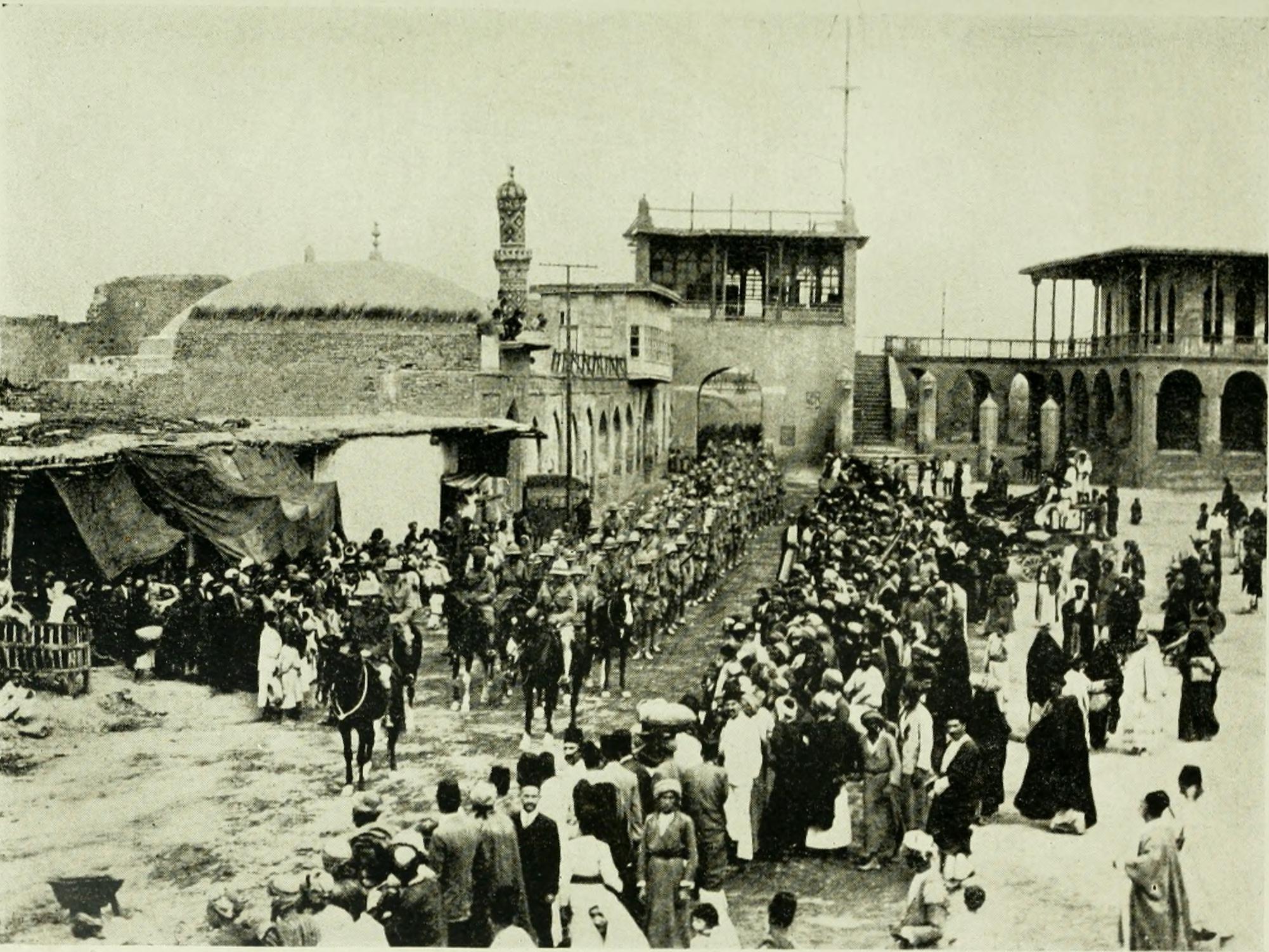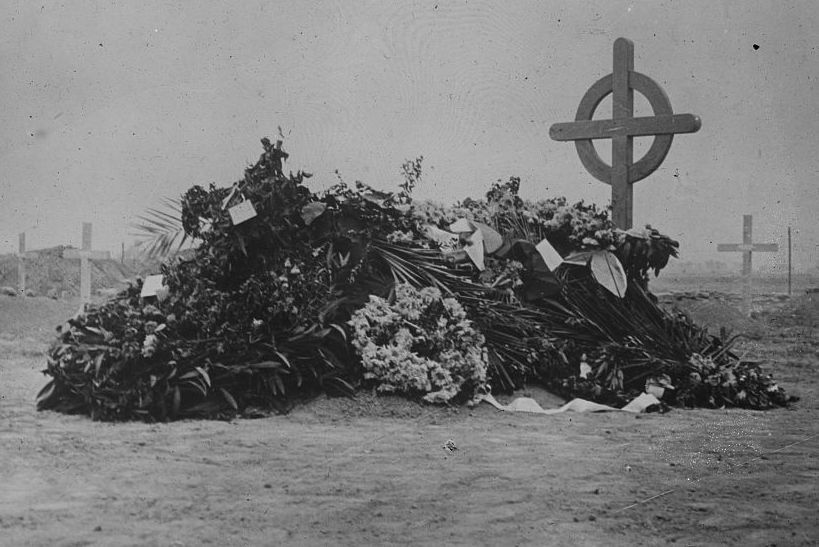1. Overview
Lieutenant-General Sir Frederick Stanley Maude, born on June 24, 1864, was a distinguished British Army officer renowned for his pivotal role in the Mesopotamian campaign during the First World War. His military career, marked by service across various global fronts, culminated in the significant capture of Baghdad in March 1917. Maude's leadership in Mesopotamia involved the extensive reorganization and resupply of Allied forces, leading to a series of decisive victories that dramatically shifted the course of the war in the Middle East. He is particularly remembered for his proclamation upon entering Baghdad, which declared the British forces as liberators rather than conquerors. Maude's life was cut short by cholera in November 1917 while still on active duty in Mesopotamia, but his legacy is preserved through various memorials and his enduring statements on the nature of his command.
2. Early Life and Education
Frederick Stanley Maude was born in Gibraltar on June 24, 1864, the youngest son of General Frederick Francis Maude, who had been awarded the Victoria Cross in 1855 during the Crimean War. His mother was Catherine Mary, née Bisshopp, daughter of the Very Reverend George Bisshopp, 9th Baronet, Dean of Lismore. The Maude family traced their lineage back to Eustace de Montaut, who arrived in England during the Norman Conquest.
Maude received his early education at St Michael's School, Aldis House, Slough, and later attended Eton College, where he was elected to Pop, a prestigious society for senior students. After completing his studies at a crammer, he entered the Royal Military College, Sandhurst. He successfully graduated from Sandhurst in 1883 and was commissioned into the Coldstream Guards, a distinguished infantry regiment of the British Army, in February 1884.
3. Military Career
Sir Frederick Stanley Maude's military career spanned several decades and continents, marked by steady promotions and significant commands, particularly during the First World War.
3.1. Early Service
Maude's first experience in active service came in Egypt, where he served from March to September 1885. For his participation in this campaign, he was awarded the Egyptian Medal and the Khedive's Egyptian Star. In March 1888, he was appointed an adjutant. He furthered his military education by attending the Staff College, Camberley, from 1895 to 1896. During this period, he was promoted to captain on August 28, 1895.
His next promotion to major occurred on February 5, 1899. Maude then saw service during the Second Boer War in South Africa, where he served from January 1900 to March 1901. For his contributions in this conflict, he was mentioned in dispatches on September 10, 1901, and was appointed a Companion of the Distinguished Service Order (DSO). He also received the Queen's South Africa Medal.
In May 1901, Maude was appointed military secretary to the Earl of Minto, who served as the Governor General of Canada. In this capacity, he accompanied the Duke and Duchess of Cornwall and York (who would later become King George V and Queen Mary) on their Royal Tour of Canada in September and October 1901. During this tour, Maude joined the Duke of York and Lord Minto for a duck hunt at Delta Marsh, Manitoba. In recognition of his services in administering the tour, he was appointed a Companion of the Order of St Michael and St George (CMG) in October 1901. He continued to serve on the staff of the Governor-General until Lord Minto's tenure ended in 1904.
Upon his return to Britain, Maude became the second-in-command at the Coldstream Guards. He subsequently joined the general staff, receiving a promotion to lieutenant colonel in June 1907 and then to colonel in July 1911. By this time, he was serving at the War Office in London as an assistant director.
3.2. First World War
Maude's service during the First World War saw him command forces on the Western Front, in the Dardanelles, and most notably, in the Mesopotamian campaign.
3.2.1. Western Front

At the outbreak of the First World War, Maude initially served in France. He was a staff officer with III Corps. In October 1914, he was promoted to the temporary rank of brigadier general and was given command of the 14th Infantry Brigade, which was part of the 5th Division, replacing Brigadier General Stuart Peter Rolt. In April 1915, he was wounded in action and returned home to recover from his injuries.
He returned to France in May 1915. In June, he was promoted to major general and transferred to command the 33rd Division, a Kitchener's Army formation that was still undergoing training in Britain.
3.2.2. Dardanelles
In mid-August 1915, Maude was instead assigned to command the 13th (Western) Division in Suvla, as part of the Dardanelles campaign. The 13th Division suffered heavy casualties during the retreat from Suvla and also during the landings and subsequent evacuation from Helles. Maude was notably the last man to be evacuated from Suvla Bay. Following their service in the Dardanelles, the 13th Division was transferred to Mesopotamia in March 1916.
3.2.3. Mesopotamian Campaign

Maude arrived in Mesopotamia towards the end of the British failure at the Siege of Kut. In July 1916, he was promoted to temporary lieutenant general, replacing Lieutenant General G. F. Gorringe as commander of the newly designated Tigris Corps (III Indian Army Corps). Despite initial instructions to merely hold the existing line, Maude immediately began the critical task of reorganizing and re-supplying his combined British and Indian forces. By late July 1916, he was appointed commander of all Allied forces in Mesopotamia, succeeding Sir Percy Lake.
Further advances in Mesopotamia were ordered on September 18, 1916, by politicians such as Curzon and Chamberlain. These orders were given against the wishes of the Chief of the Imperial General Staff (CIGS), General "Wully" Robertson. Military historian Basil Liddell Hart later suggested that Maude "consciously or unconsciously" disregarded his secret orders from Robertson not to attempt to capture Baghdad. However, Robertson eventually changed his stance in December 1916, authorizing Maude to attack when it appeared that Russian forces might advance towards Mosul, thereby neutralizing any potential Turkish threat to Mesopotamia.

With the arrival of reinforcements and additional equipment, Maude led his forces through a steady series of victories. Advancing up the Tigris, his troops secured significant wins at the Mohammed Abdul Hassan, Hai, and Dahra in January 1917. This successful push culminated in the recapture of Kut in February 1917. On March 11, 1917, Maude's forces achieved the pivotal capture of Baghdad. Shortly before this, his rank of lieutenant-general had been made permanent, in recognition of his distinguished service as Commander-in-Chief of the Forces in Mesopotamia. Eight days later, on March 19, he issued the famous Proclamation of Baghdad. From Baghdad, he continued his offensive with the Samarrah Offensive and extended his operations to the Euphrates and Diyala rivers.
4. Death

After a period of relative calm during the summer, in November 1917, while his forces were engaged in operations at Ramadi and Tikrit, Lieutenant-General Sir Frederick Stanley Maude contracted cholera. Some accounts suggest he may have contracted the disease from drinking unboiled milk. He died in the same house where German field marshal Colmar Freiherr von der Goltz had died nineteen months earlier. Following Maude's death, Lieutenant General W. R. Marshall succeeded him in command.
Maude's body was laid to rest in the Baghdad (North Gate) War Cemetery. His initial grave and marker were later replaced by a more elaborate structure, which was then enclosed within a small mausoleum. On the walls of this mausoleum, the standard Commonwealth War Graves Commission headstone is mounted. The epitaph inscribed on his gravestone reads: "'I am the resurrection and the life'. He fought a good fight. He kept the faith." In March 1918, the British Parliament approved a request from the King to grant the sum of 25.00 K GBP to Maude's widow as a posthumous recognition of his service.
5. Memorials and Legacy
Sir Frederick Stanley Maude's lasting impact is commemorated through various memorials, named places, and significant quotations that reflect his leadership and wartime pronouncements.
5.1. Memorials and Statues
A memorial stone dedicated to Sir Frederick Stanley Maude is located at Brompton Cemetery in London. In Baghdad, an equestrian statue of Maude was unveiled in December 1923. The statue itself was sculpted by William Goscombe John, while the pedestal was designed by Edward Warren. The unveiling ceremony was performed by Sir Henry Dobbs, the High Commissioner to Iraq, and was attended by King Feisal, Air Marshal Sir John Salmond, and numerous other dignitaries, including the French and American consuls.
However, the statue became a target during the Iraqi Republican Revolution of 1958. It was attacked and subsequently torn down by an anti-British mob, and its fate after this event remains unknown.
5.2. Place Names
In honor of Sir Frederick Stanley Maude, Mount Maude, a prominent peak located in the Cascade Range, was named after him by Albert H. Sylvester.
5.3. Quotes
One of Sir Frederick Stanley Maude's most notable pronouncements is his proclamation upon entering Baghdad in March 1917, which defined his mission as a liberator:
- "Our armies do not come into your cities and lands as conquerors or enemies, but as liberators."